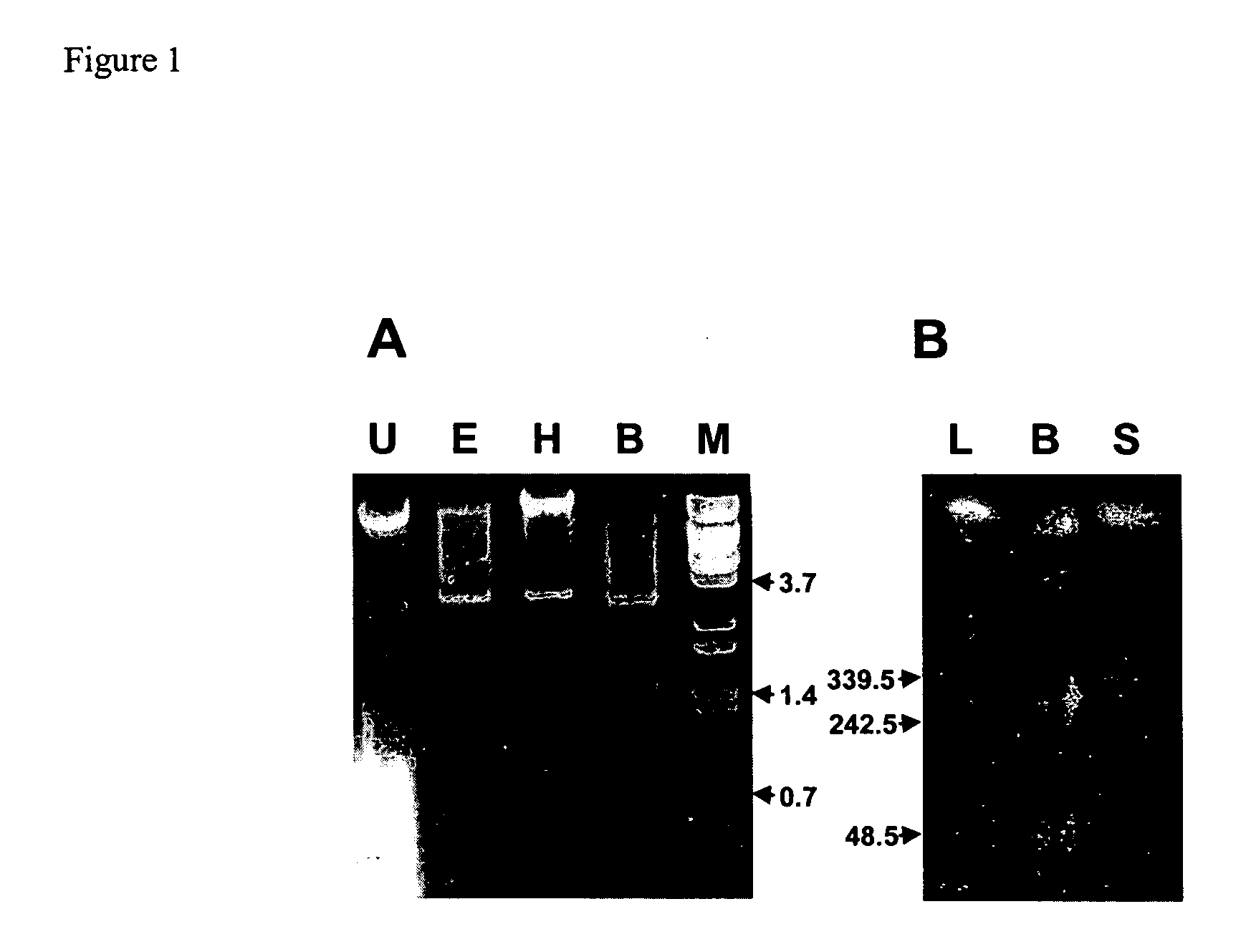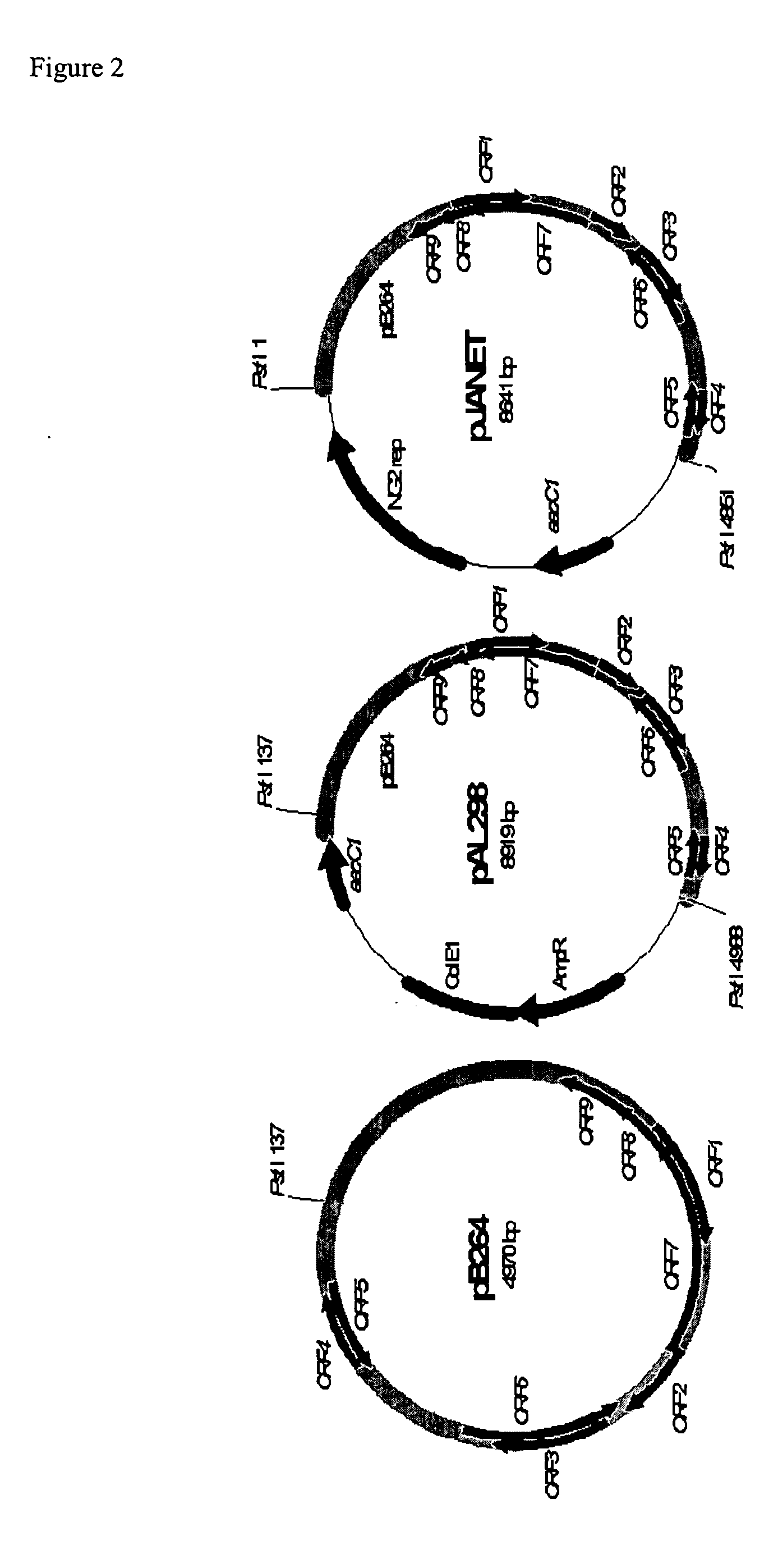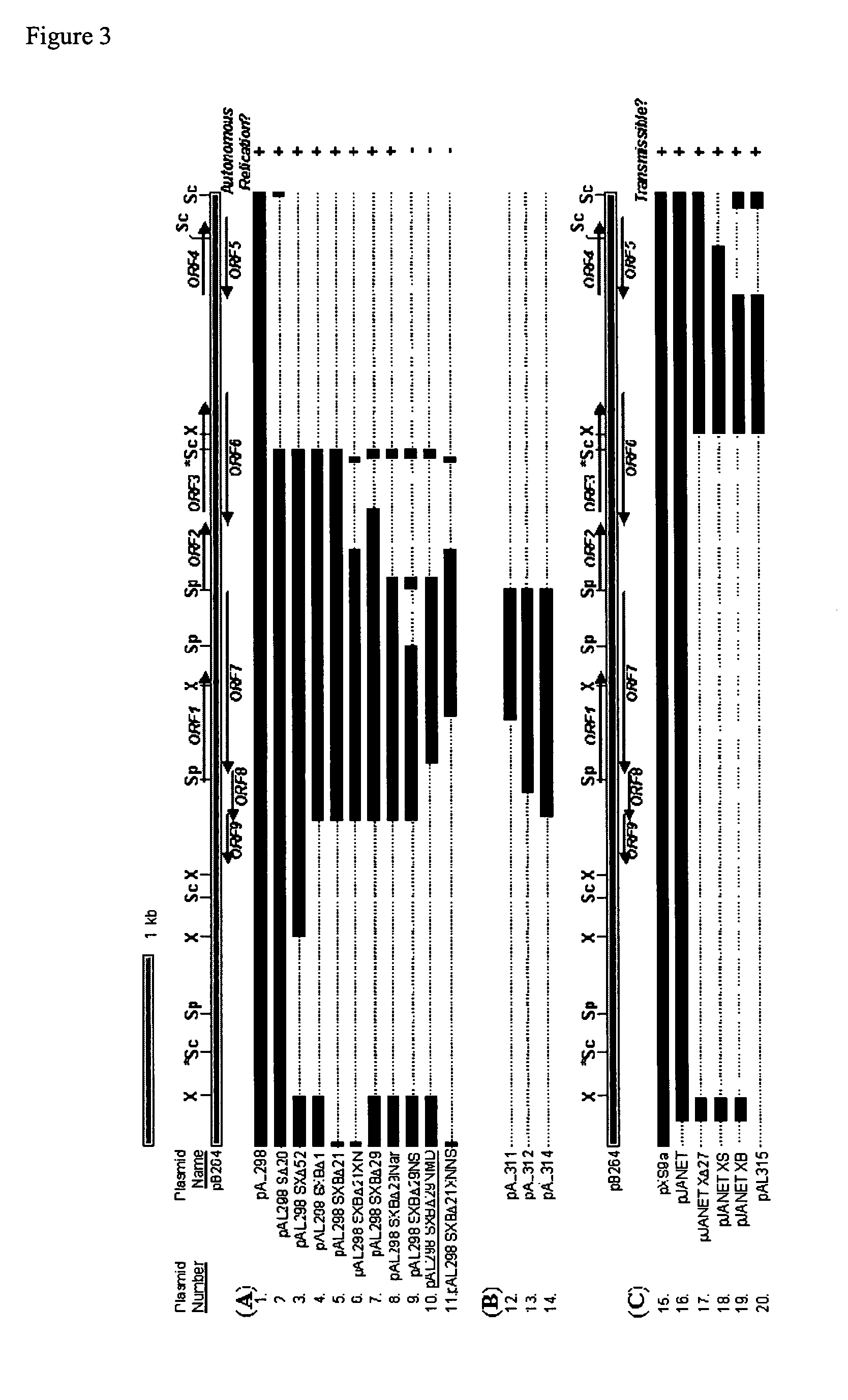Novel compositions and methods for genetic manipulation of Rhodococcus bacteria
a technology of rhodococcus bacteria and compositions, applied in the direction of microorganisms, biochemistry apparatus and processes, stable introduction of dna, etc., can solve the problems of limited genetic tools available for strain manipulation, difficult or nearly impossible to generate transformants, and few appropriate genetic tools to investigate and exploit metabolic activities
- Summary
- Abstract
- Description
- Claims
- Application Information
AI Technical Summary
Benefits of technology
Problems solved by technology
Method used
Image
Examples
example 1
Exemplary General Methods for Practice
General DNA Manipulation
[0139] Restriction enzymes, Klenow fragment of DNA polymerase and molecular weight markers were purchased from New England Biolabs (Beverly, Mass.) and used as specified by the manufacturer. The pCR-Script cloning kit was purchased from Stratagene (La Jolla, Calif.) and the GeneClean II kit was purchased from Bio101 (Vista, Calif.), and both were used according to the manufacturers' guidelines. DNA sequencing of pB264 was carried out initially by Lark Technologies (Houston, Tex.), while ambiguities were resolved and additional sequencing was carried out at the MIT Biopolymers Lab using Applied Biosystems BigDye Terminator cycle sequencing reagents (Applied Biosystems, Foster City, Calif.). Large scale plasmid purification from E. coli cultures were carried out using the Wizard Plus Maxiprep kit (Promega, Madison, Wis.).
Strains and Plasmids
[0140] Principal strains and plasmids used in this invention are described in ...
example 2
Identification and Cloning of pB264
[0150] In an effort to develop plasmids for genetic manipulation of rhodococci, we examined a number of Rhodococcus strains for the presence of small, cryptic plasmids. Agarose gel electrophoresis of DNA isolated from the B264-1 strain revealed a ca. 5 kb plasmid, which we labeled pB264. Whereas neither EcoRI nor HindIII were able to cut this plasmid, digestion with BamHI produced three bands of ca. 3 kb, 1.5 kb and 0.4 kb (FIG. 1A). A sample of the undigested pB264 was isolated from an agarose gel via GeneClean. Isolation of circular DNA by this method produces a small amount of sheared material. We purified the sheared material from a second agarose gel, treated the DNA with Klenow fragment of DNA polymerase, and ligated the products into pCR-Script, producing pAL220. Sequencing of pAL220 revealed an insert of 4970 bp (GenBank accession AY297818). FramePlot analysis of the pB264 element revealed several ORFs. The two largest of these were ORF6 (...
example 3
pB264 Replication
pB264 Replicates in Other Rhodococcus Strains
[0153] To test whether pB264 derivatives could be used as gene expression vectors, we sought to determine whether this plasmid could replicate in other Rhodococcus strains. Since ampicillin resistance is unsuitable for selection inRhodococcus, we introduced additional markers for KanR, TsrR or GntR into pAL220, creating the plasmids pAL224, pAL231 or pAL298, respectively. Electroporation of these plasmids into strains B264-1, I24 or R. erythropolis SQ1 produced antibiotic resistant colonies. (Because the I24 strain has a high incidence of spontaneous resistance to kanamycin, pAL224 was not used to test replication in I24.) Unrearranged plasmids could be recovered from these transformants, indicating that each plasmid could replicate autonomously in these strains and that the pB264 element could support replication. The ColE1 replicon of pCR-Script itself does not appear to support replication in Rhodococcus as we have ...
PUM
| Property | Measurement | Unit |
|---|---|---|
| Temperature | aaaaa | aaaaa |
| Temperature | aaaaa | aaaaa |
| Temperature | aaaaa | aaaaa |
Abstract
Description
Claims
Application Information
 Login to View More
Login to View More - R&D
- Intellectual Property
- Life Sciences
- Materials
- Tech Scout
- Unparalleled Data Quality
- Higher Quality Content
- 60% Fewer Hallucinations
Browse by: Latest US Patents, China's latest patents, Technical Efficacy Thesaurus, Application Domain, Technology Topic, Popular Technical Reports.
© 2025 PatSnap. All rights reserved.Legal|Privacy policy|Modern Slavery Act Transparency Statement|Sitemap|About US| Contact US: help@patsnap.com



